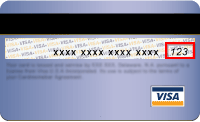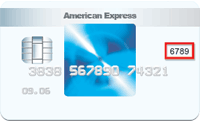How the 9 Enneagram types perceive how to sell

Sales and the Enneagram
Most people sell to others, whether selling products, services, medical care, or even ideas. Selling with integrity is really the ability to influence others to respond affirmatively to something they actually want or need.
The Enneagram is extraordinarily useful in sales in three different ways: to help sales personnel understand how their approach has both type-based strengths and weaknesses, and also includes specific paths for professional development; for sales managers to learn how to best support and develop their sales staff; and to enable those in sales and customer service to focus their efforts on the needs and interpersonal styles of customers and clients of each Enneagram type.
Find out about the sales and service strengths, challenges and development tips for each Enneagram type.
Strengths
One
Organized, precise, provide product and service details, excellent follow-through
Two
Establish strong customer relationships, warm, service-oriented, committed to meeting customer needs
Three
Confident about product and services, competent, efficient, focused on closing the sale
Four
Interesting, bring creativity to the product and service offerings, listen well to customer needs
Five
Non-intrusive, knowledgeable about all aspects of product and service offerings, deliver what is promised
Six
Convey both the opportunities as well as the risks of products and services, quick-witted and humorous
Seven
Enthusiastic, able to articulate possible opportunities and creative uses related to products and services, engaging and charming
Eight
Honest, candid, credible, able to sell products and services above and beyond initial requests
Nine
Trustworthy, relaxed, develop rapport easily, non-aggressive, friendly, listen well
Challenges
One
Want everything – products, services, and back-office support – to be 100% perfect, may give too much detail, become irritated easily
Two
May have difficulty communicating negative information customer won’t like, such as changes in products or services, price increases, fewer benefits
Three
May over-sell products and services or appear over-confident, too smooth, or insincere
Four
May tell too many stories or incorrectly interpret customer reactions, may over-personalize customer complaints
Five
May not appear warm, concerned or relational
Six
May communicate too many concerns or downsides of products and services, can become reactive if customer becomes assertive
Seven
May communicate only positive aspects of products and services while ignoring negative information, may not be empathic toward customer
Eight
May feel overpowering or intimidating, aggressive or short-tempered
Nine
May make unnecessary customer concessions in order to reduce tension, may not follow through on all details, especially if pressured
Development tips
One
Focus on getting the key elements right, giving customers what they need rather than over-focusing on the details, and this will reduce your frustration and irritability
Two
Be clear and unambiguous when presenting information customers may not like, remembering that clarity may be more important than trying to meet all customer needs
Three
Pay extra attention to being forthright and entirely honest about all aspects of selling, including product and service details, costs, and time requirements
Four
Listen to the customer four times more than you share your own thoughts, feelings, and opinions, do not take a “no” from a customer as a personal rejection
Five
Communicate with customers from the heart as much as the head, recognizing that to fully understand customer needs requires empathy and emotional understanding
Six
Reduce the quantity that you share with customers by 40% and start with positive information rather than anticipating product and service concerns
Seven
Share both the positive and negative aspects of the products and services, and listen completely until customers have finished an entire thought before commenting
Eight
Pull your intensity and energy back 30% to allow room for the customer to move forward and not feel overwhelmed by your intensity
Nine
Be clear, concise and fully in your body when you interact with customers, and learn how to differentiate a request from pressure or demands


